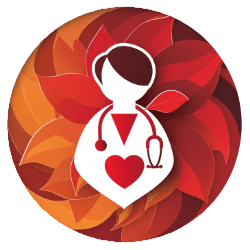Imagine the relief as tension melts away from your back like ice on a sunny day, bringing a sense of calm to your overworked muscles.
As a nurse, you're no stranger to the demands of long shifts that leave your back aching, searching for solace in the brief moments of rest you find.
The good news is, there's a way to reclaim your comfort and strength through the power of yoga. We've curated a list of 10 healing poses specifically designed to target back pain, offering a blend of stretching, strengthening, and relaxation techniques that speak directly to the challenges you face.
From the gentle embrace of Child's Pose to the restorative calm of Legs-Up-The-Wall Pose, each movement is a step towards a more comfortable shift.
Let's explore how these poses can become your secret weapon against back pain, transforming your daily routine and bringing a much-needed reprieve to your demanding role.
Key Takeaways
- Gentle stretching poses like Child's Pose and Pigeon Pose relieve back and hip discomfort.
- Cat-Cow Stretch and Sphinx Pose increase spinal flexibility and strengthen back muscles.
- Downward-Facing Dog and Standing Forward Bend improve posture and provide stress relief.
- Bridge Pose and Warrior I promote emotional well-being and reduce the risk of backaches.
Child's Pose (Balasana)
If you're a nurse grappling with back pain, Child's Pose (Balasana) offers a gentle yet effective way to stretch your lower back and hips, easing discomfort and fostering relaxation. This pose is a sanctuary for stress management, allowing you to release the burdens of your day and focus on your well-being.
As someone dedicated to serving others, it's crucial to remember the importance of tending to your own physical and mental health.
Child's Pose not only targets lower back pain but also relieves tension in the neck and shoulders, areas that often bear the brunt of long shifts and the physical demands of nursing. Engaging in this pose can help calm your mind, reducing anxiety and creating a sense of peace amidst a hectic environment. Moreover, it enhances digestion and can alleviate constipation, promoting an overall sense of well-being.
Incorporating Child's Pose into your daily routine is a simple, accessible way to maintain flexibility, manage stress, and support your back's health. It's a gentle reminder that taking time for self-care enables you to provide the best care for others.
Cat-Cow Stretch (Marjaryasana-Bitilasana)
If you're a nurse struggling with back pain, the Cat-Cow Stretch could be your gateway to relief and better spinal health. We'll guide you through the steps to ensure you're getting the most out of this beneficial pose.
Understanding its benefits for back health will also highlight why it's a crucial addition to your daily routine.
Benefits for Back Health
Delving into the Cat-Cow Stretch, known as Marjaryasana-Bitilasana, you'll discover a powerful way to enhance your back's health, offering benefits like increased spinal flexibility and relief from stiffness.
This yoga pose not only strengthens and stretches the back and abdominal muscles but also plays a crucial role in alleviating back pain, particularly in the lower back.
The gentle, rhythmic movement promotes relaxation and stress relief, essential for anyone dedicated to serving others.
Furthermore, engaging in this practice can lead to improved posture and spinal alignment, contributing to the overall health benefits of yoga.
Step-by-Step Guide
Let's dive into the Cat-Cow Stretch (Marjaryasana-Bitilasana), a simple yet effective way to begin easing your back pain and enhancing spinal health.
Start in a tabletop position on your hands and knees, ensuring your wrists are directly under your shoulders and your knees under your hips.
Inhale deeply as you arch your back, lifting your head and tailbone towards the ceiling to enter the cow position.
Then, exhale as you round your spine, tucking your chin and tailbone, transitioning into the cat position.
This yoga pose encourages a flowing motion, syncing your breath with each movement.
It's a gentle stretch that not only alleviates back pain but also promotes physical health by improving spinal flexibility.
Let this be a step towards your well-being.
Downward-Facing Dog (Adho Mukha Svanasana)
Embracing the Downward-Facing Dog (Adho Mukha Svanasana) can significantly strengthen your arms and legs while offering a deeply needed stretch to alleviate back pain. Incorporating this pose into your yoga practice not only eases the discomfort but also supports your body in preventing future injuries.
As a nurse, you're constantly on your feet, serving others, and your dedication often comes at the expense of your own physical well-being. The beauty of the Downward-Facing Dog lies in its ability to elongate the spine and release tension in the back muscles, a common issue for those in the nursing profession. This pose strengthens your body, improves circulation, and energizes you, making it an essential part of your routine to combat back pain.
Regular practice can enhance your posture, reduce stiffness in the shoulders and neck, and ultimately support you in your service to others.
Pigeon Pose (Eka Pada Rajakapotasana)
Nurses, your demanding shifts often result in lower back and hip discomfort, but incorporating Pigeon Pose (Eka Pada Rajakapotasana) into your routine can offer significant relief. This pose is a powerful tool for stretching your hips, groin, and lower back, directly addressing areas that frequently harbor tension from long hours on your feet.
To begin, roll out your yoga mat and prepare to ease into Pigeon Pose. This practice not only alleviates discomfort in your lower back and hip flexors but also works wonders in improving hip flexibility. For those of you experiencing sciatic nerve pain, regular engagement in Pigeon Pose can provide a much-needed respite.
Remember, maintaining proper alignment is crucial. Keep your hips square to the front of your mat to maximize the stretch and prevent injury. Don't hesitate to use props for support; a cushion or folded blanket under your hips can make the pose more accessible and comfortable.
Adopting Pigeon Pose into your daily routine contributes to greater overall mobility, enabling you to move more freely and with less pain. Over time, you'll find your back pain diminishing, allowing you to continue serving others with renewed energy and less discomfort.
Sphinx Pose (Salamba Bhujangasana)
While you've experienced the hip and lower back benefits of Pigeon Pose, incorporating Sphinx Pose (Salamba Bhujangasana) into your routine can further strengthen your back and improve your posture. This pose not only strengthens the back but also opens your chest and lungs, enhancing your breathing, which is vital during those long shifts. Additionally, it stimulates abdominal organs, aiding in digestion—a common issue when you're constantly on the go.
Before starting any exercise, it's essential to listen to your body and adjust as necessary. Sphinx Pose offers a gentle yet effective way to relieve stress on the spine, making it a perfect addition to your self-care regimen.
- *Feel the relief as your lower back tension dissipates, allowing you to care for others without the distraction of your own discomfort.*
- *Imagine taking deeper, more fulfilling breaths as your chest opens, infusing your long days with a sense of calm and focus.*
- *Visualize your improved posture empowering you to move with confidence and strength, embodying the resilience that defines your profession.*
Incorporating Sphinx Pose (Salamba Bhujangasana) into your daily routine is a step towards sustaining your health and enhancing your ability to serve others with compassion.
Standing Forward Bend (Uttanasana)
Transitioning to the Standing Forward Bend (Uttanasana) can offer immediate relief for your aching back, especially after hours on your feet. This simple yet powerful pose not only eases tension in your spine but also helps reduce stress, which you know all too well in your demanding role. By folding forward, you allow your back muscles to stretch and decompress, providing a much-needed break from the constant strain of standing or walking during long shifts.
To begin, stand with your feet hip-width apart, breathe deeply, and gently fold forward from your hips, not your waist. Let your head hang freely, and don't worry if your hands can't touch the floor; it's the intention that counts. The gravity aids in elongating your spine, and with each exhale, you can delve deeper into the pose.
Incorporating the Standing Forward Bend into your daily routine can also aid in lowering blood pressure, a bonus for those stressful days. Remember, it's not about perfection but finding a moment of peace for your body and mind. Taking the time to practice Uttanasana is a simple act of self-care that can make a significant difference in your well-being.
Bridge Pose (Setu Bandha Sarvangasana)
If you're a nurse struggling with back pain, the Bridge Pose (Setu Bandha Sarvangasana) could be a game-changer for you.
It not only stretches and strengthens your back but also helps in reducing stress and anxiety, crucial for your hectic work life.
Let's explore how you can perform this pose correctly to reap its full benefits and integrate it into your daily routine for better posture and relaxation.
Benefits for Nurses
Nurses, practicing the Bridge Pose (Setu Bandha Sarvangasana) can offer you significant relief from back pain and fatigue, enhancing your physical and emotional well-being. This pose is a cornerstone in any exercise program, especially for those who serve others tirelessly. It's not just a forward bend; it's a journey to rediscovering your strength and flexibility.
- Emotionally uplifting: Calms your mind, reducing stress and anxiety, providing you with the emotional rejuvenation you desperately need.
- Physically transformative: Opens your heart and stretches your body, improving posture and alleviating the strain of long hours on your feet.
- Promotes well-being: Encourages relaxation and mental clarity, essential for those who give so much of themselves every day.
Incorporate Bridge Pose into your routine to rediscover balance and serenity.
Proper Execution Tips
To master the Bridge Pose (Setu Bandha Sarvangasana) and reap its full benefits, you'll want to start by lying on your back with your knees bent and feet planted firmly hip-width apart. This pose is a powerful tool to alleviate the physical stress on your left side, common in the nursing profession.
| Do | Don't |
|---|---|
| Press your arms and feet into the floor to lift your hips. | Avoid overarching your lower back. |
| Engage your thighs and glutes for support. | Don't strain your neck; keep your chin slightly lifted. |
| Maintain a straight line from shoulders to knees. | Don't rush; hold the pose for 30 seconds to 1 minute. |
| Breathe deeply to reduce stress. | Don't forget to release slowly. |
Supine Twist (Supta Matsyendrasana)
Experiencing back pain from long shifts? The Supine Twist, or Supta Matsyendrasana, offers a soothing remedy to alleviate discomfort and support spinal health. Begin by lying on your back, drawing one knee to your chest, then guide it across your body with your opposite hand, ensuring your shoulder remains grounded. This gentle spinal twist not only stretches your back, hips, and chest but also promotes relaxation and balance in your body.
Feel the tension melt away as you breathe deeply, letting your left hand or right hand guide the movement, depending on the side. Imagine the relief as your back pain dissipates, replaced by a sense of calm and readiness to face another day of serving others. Envision your body thanking you, with every muscle and joint finding its harmony, allowing you to continue your invaluable work with ease.
Remember to keep both shoulders on the mat and gaze towards the opposite side, fully embracing the supine twist's benefits. This pose not only aids in digestion and alleviates lower back pain but also helps you find balance and peace amidst the physical demands of nursing.
Warrior I (Virabhadrasana I)
Stepping into Warrior I (Virabhadrasana I) not only empowers your stance but also fortifies your body's resilience against back pain, offering a robust blend of strength and flexibility. As a nurse, you're accustomed to the demands of long shifts that can take a toll on your body, especially your lower back. Integrating Warrior I into your routine can be a beacon of relief and strength, allowing you to serve with even more dedication.
| Benefits | Impact on Nursing |
|---|---|
| Strengthens legs, arms, back | Reduces the risk of backaches |
| Stretches chest, shoulders, belly | Enhances respiratory function |
| Improves focus, balance | Aids in maintaining posture during long shifts |
| Increases body awareness | Promotes a mindful approach to patient care |
Legs-Up-The-Wall Pose (Viparita Karani)
Next, let's explore the Legs-Up-The-Wall Pose, or Viparita Karani, a simple yet effective way to ease your back pain.
By properly positioning your legs up a wall, you're not just helping your back; you're also enhancing your blood circulation and reducing stress.
It's crucial to ensure your hips are snug against the wall and to hold the pose while focusing on deep, relaxing breaths for 5-15 minutes.
Benefits for Back Relief
If you're struggling with back pain, the Legs-Up-The-Wall Pose (Viparita Karani) offers significant relief by promoting circulation and reducing inflammation in your legs. This pose not only targets the physical aspects of back pain but also helps to reduce stress, offering a holistic approach to your well-being. By integrating this pose into your routine, you can experience a profound sense of relaxation and rejuvenation, essential for those who dedicate their lives to serving others.
- Feel the tension melt away as the pose calms your nervous system, allowing you to better cope with the demands of your profession.
- Embrace a moment of peace in your busy day, enhancing your mental and emotional resilience.
- Rejuvenate your body and spirit, improving your capacity to care for others with renewed energy and empathy.
Proper Pose Execution
To properly execute the Legs-Up-The-Wall Pose (Viparita Karani), start by positioning your hips as close to the wall as possible, laying your back flat on the ground. Elevate your legs straight up the wall, keeping your toes together, ensuring your body forms a gentle L-shape.
Bring your arms by your sides, palms facing up, to deepen your relaxation. Place a folded blanket or cushion under your hips for added support, allowing your lower back to comfortably rest. Gaze straight ahead and focus on deep, soothing breaths.
Remain in this pose for 5-15 minutes, embracing the calm. To exit, gently slide your legs down, rest on your side briefly, then ease yourself up, carrying the sense of peace with you.
Frequently Asked Questions
Which Asana Is Recommended for Back Pain?
If you're bending over backwards to find relief for back pain, the Supported Bridge Pose is your go-to. It stretches your spine, eases fatigue, and soothes your mind, making it perfect for rejuvenation.
What Is the Best Posture for Lower Back Pain?
For lower back pain, you'll want to keep a neutral spine—ears over shoulders, shoulders over hips, hips over ankles. Engaging your core and avoiding slouching or excessive arching helps ease the pain.
What Is the Fastest Way to Recover From Back Pain?
To quickly recover from back pain, visualize easing into gentle yoga poses. They flex your spine, relieve tension, and strengthen muscles. Always consult a doctor before starting and listen to your body to avoid injury.
What Is the Most Common Technique to Help Reduce Back Pain?
The most common technique to reduce back pain is restorative yoga. It involves gentle stretches and relaxation, significantly easing your discomfort. Before starting, it's crucial to consult a healthcare professional to ensure it's right for you.





